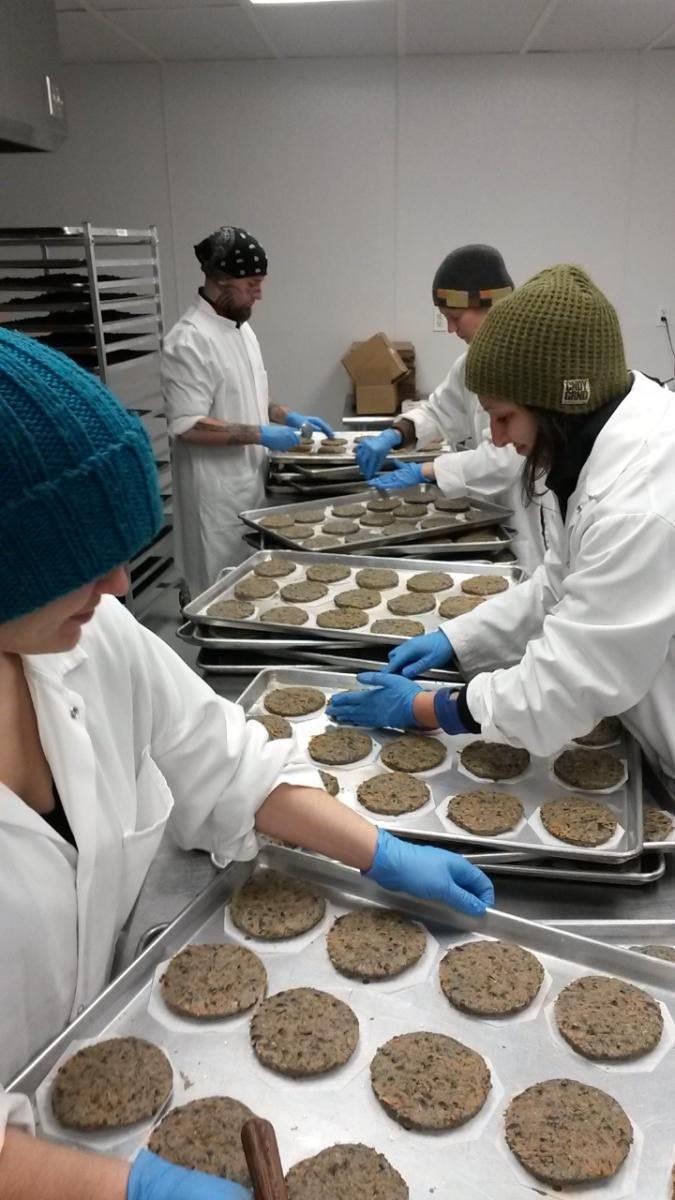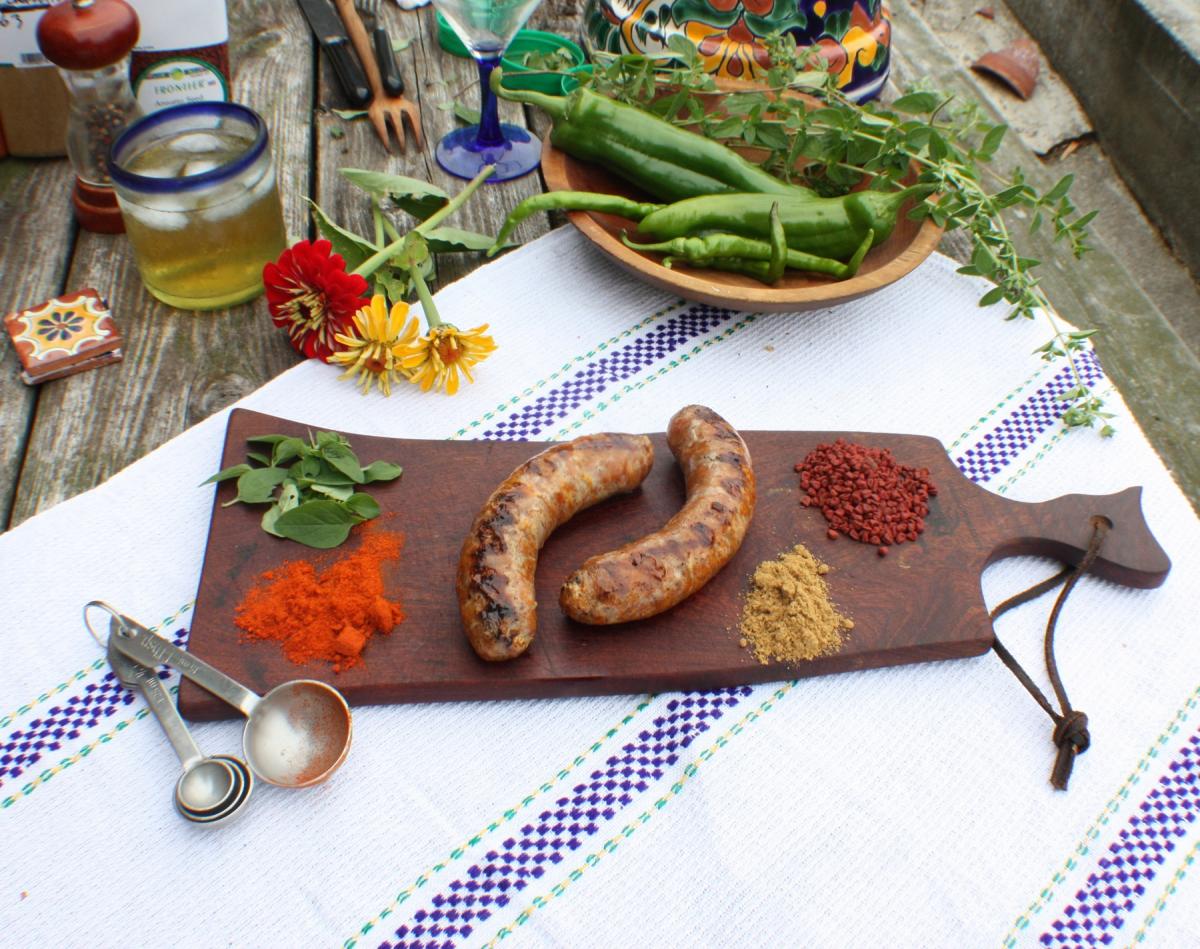
Supply-chain relationships help producers and get farmers back on the farm.
 Joe Bossen loves beans. He enjoys growing beans and working with the farmers who grow beans for Vermont Bean Crafters—producers of organic bean burgers, dry beans, and hummish (bean-based hummus). Bossen especially loves making bean burgers and developing recipes for new Vermont Bean Crafters products. These items can be found in stores and institutions across Vermont and beyond. Rapid growth has them preparing to open their own kitchen, after incubating production and processing at the Mad River Food Hub in Waitsfield, Vermont since 2011.
Joe Bossen loves beans. He enjoys growing beans and working with the farmers who grow beans for Vermont Bean Crafters—producers of organic bean burgers, dry beans, and hummish (bean-based hummus). Bossen especially loves making bean burgers and developing recipes for new Vermont Bean Crafters products. These items can be found in stores and institutions across Vermont and beyond. Rapid growth has them preparing to open their own kitchen, after incubating production and processing at the Mad River Food Hub in Waitsfield, Vermont since 2011.
“I’m amazed at how much time I need to spend talking with insurance brokers, bankers, and all the vagaries of business administration; and in the first couple of years handling our own distribution,” says Bossen. “We didn’t have a sustainable volume of sales to justify any sort of distribution—that few extra dollars per case really counted then. Every time I was making deliveries, I was also forging new connections—it was distribution and sales in one. Running a distribution channel in-house after a certain point becomes like running a whole other business, and not one I was nearly as interested in as producing food with beans.”
Learning to be a jack-of-all-trades takes time. And time is money.
“As local and regional food systems emerge, farmers are interested in scaling up local production and are seeking new ways to be profitable while producing safe and affordable food in a relationship-based local food economy,” says Abbey Willard, local foods administrator at the Vermont Agency of Agriculture, Food & Markets. “We have been promoting a vertical integration approach to build a sustainable food business—where a farmer or food business takes on all responsibilities from production to marketing to delivery. Selling products at a wholesale price to a packer, distributor, or other middle-man organization retains only a fraction of the food product’s value, so farmers and producers have learned to incorporate storage, marketing, and distribution into their business plan. It has been thought that reserving all profit margins for the farmer or food entrepreneur establishes ultimate profitability and success.”
The vertically integrated system, with farmers struggling to play all roles and working long days across all seasons, in a competitive, time-consuming and labor intensive industry, is challenging for many local producers and does not necessarily prove the most cost-effective.
As Vermont continues to grind its food system relocalization gears with implementation of the Farm to Plate Strategic Plan, a new niche local supply chain is developing. Local organizations and businesses are offering aggregation and storage options, exploring local processing and distribution possibilities, and offering value-chain facilitation roles to connect buyers with sellers.
“From a short term financial standpoint we’re less profitable, but long term working with multiple partners is proving to be a great move,” says Peter Colman, owner of Vermont Salumi, who has built partnerships across all stages of the supply chain, so he can hone in on the details of producing high quality seasoned meats sold at coops and distinct specialty markets throughout the Northeast.
“Working with Vermont Packinghouse has been one of the greatest opportunities for Vermont Salumi,” shares Colman. “Their experience in the industry is helping us produce a higher quality product.” Colman purchases humanely raised pork exclusively from the Northeast region and the Vermont Packinghouse processes the meat into select cuts.
Vermont Salumi’s niche supply chain trail brings the pork cuts to Mad River Food Hub for curing and to Black River Meats for sausage production. “The Mad River Food Hub offered me the chance to help design the facility without borrowing the money while getting their added technical support,” Colman adds. The Food Hub in turn can offer other producers a top-of-the-line curing facility. Vermont Salumi’s distribution is handled by Black River Meats and Vermont Artisan Meats.
Colman’s time not spent on production and distribution allows him to focus more heavily on product development, strategic planning, and sales.
 As sales grew for Vermont Bean Crafters, the marginal value of self-distributing began to diminish. Bossen couldn’t justify adding a distribution arm to the business at the cost of sales and product development. Instead, Bossen now works with Black River Produce, Farmigo, Metro Pedal Power, Reinhart Food Service, and Simple Scallion. “Instead of distributing, I’ve been freed up to spend more time on higher level sales. To effectively engage in institutional sales, it’s a lot more convoluted than walking in the back of a co-op with samples. I’ve also been able to spend more time in the kitchen both to dream up new offerings, and also to help continue to evolve the way we approach crafting as usual,” shares Bossen.
As sales grew for Vermont Bean Crafters, the marginal value of self-distributing began to diminish. Bossen couldn’t justify adding a distribution arm to the business at the cost of sales and product development. Instead, Bossen now works with Black River Produce, Farmigo, Metro Pedal Power, Reinhart Food Service, and Simple Scallion. “Instead of distributing, I’ve been freed up to spend more time on higher level sales. To effectively engage in institutional sales, it’s a lot more convoluted than walking in the back of a co-op with samples. I’ve also been able to spend more time in the kitchen both to dream up new offerings, and also to help continue to evolve the way we approach crafting as usual,” shares Bossen.
More farmers are interested in focusing on production and working with others to handle marketing and distribution—but without losing a profit. Wholesale prices may be lower, but margins might be the same or better when marketing and distribution costs are less and a farmer can focus on production instead of integrating everything into the farm operation. What if these costs could be contained and the farm could be more efficient as a whole while returning more dollars to the farm?
Abbey Willard states, “local supply chain partners are proving to be more efficient at their particular roles and a shift is occurring with the establishment of relationships along the supply chain, resulting in a ‘value chain‘ concept of shared risk and responsibility, integrated trust and reliability. Farm and food businesses can explore focusing on their strengths in field production, food processing, or customer engagement and allow critical supply chain roles be covered by other businesses, while also seeing their own business prosper.”
The evolution of relocalizing food production and distribution is exploring how to create the efficiencies of a vertically integrated system in a relationship-based local and regional food economy. Nationally, vertical integration has meant the concentration of market information and knowledge is in the hands of a few businesses, or corporations. “We’re looking to do the opposite,” says Jake Claro, project manager with Vermont’s Farm to Plate Initiative. “We want to get information and knowledge to as many producers and supply chain businesses as we can, but achieve the same, or similar, cost and logistical efficiencies that you see at the national level. We do not want to recreate the national system, but do want to have cost efficiency. How we can do that in Vermont—a local system with local supply chain control—is at the core of reaching the goals of the Farm to Plate Strategic Plan.”
Rachel Carter is the communications director at the Vermont Sustainable Jobs Fund, a non-profit organization created by the State of Vermont to help develop Vermont’s sustainable agriculture, renewable energy, and forest product businesses. She can be reached at 802-318-5527 or rachel@vsjf.org.
This post originally appeared on the Cornell Small Farms Program site.




